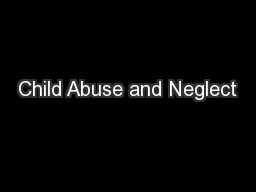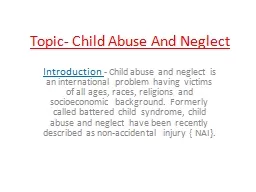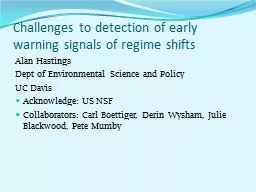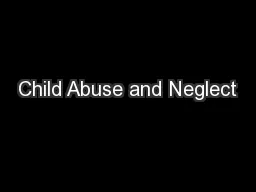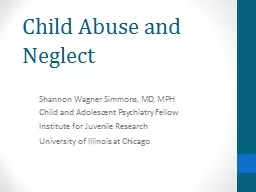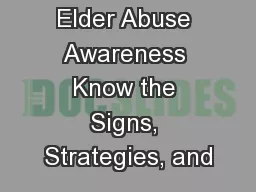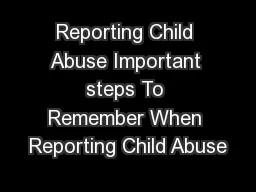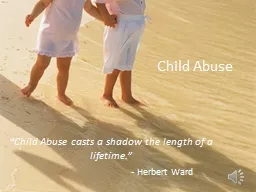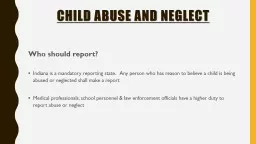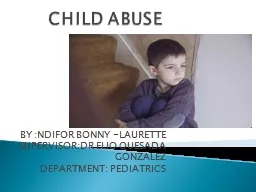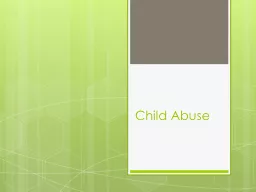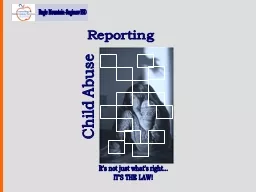PDF-SIGNS AND SYMPTOMS OF CHILD ABUSE AND NEGLECTThe warning signs and sym
Author : amelia | Published Date : 2022-08-22
NEGLECTPhysical indicators Has not received attention for physical or medical problems Medical needs are only cared for when urgent has untreated dental needs
Presentation Embed Code
Download Presentation
Download Presentation The PPT/PDF document "SIGNS AND SYMPTOMS OF CHILD ABUSE AND NE..." is the property of its rightful owner. Permission is granted to download and print the materials on this website for personal, non-commercial use only, and to display it on your personal computer provided you do not modify the materials and that you retain all copyright notices contained in the materials. By downloading content from our website, you accept the terms of this agreement.
SIGNS AND SYMPTOMS OF CHILD ABUSE AND NEGLECTThe warning signs and sym: Transcript
Download Rules Of Document
"SIGNS AND SYMPTOMS OF CHILD ABUSE AND NEGLECTThe warning signs and sym"The content belongs to its owner. You may download and print it for personal use, without modification, and keep all copyright notices. By downloading, you agree to these terms.
Related Documents


